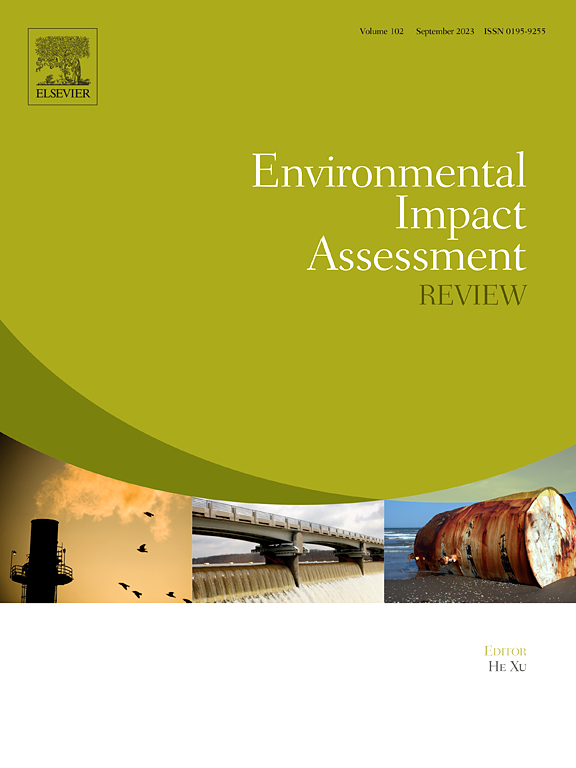Validation and assessment of Potential Fishing Zone (PFZ) dynamics along the southwest coast of India through environmental proxies and trophic guild analysis
IF 9.8
1区 社会学
Q1 ENVIRONMENTAL STUDIES
引用次数: 0
Abstract
Potential Fishing Zone (PFZ) advisories exemplify scientific information with direct societal application, particularly for fishing communities. PFZs are identified using satellite-derived Sea Surface Temperature (SST) and chlorophyll (Chl-a), representing productive ocean fronts that are expected to aggregate fish. This study aims to validate the impact of PFZ advisories on daily village fish landings and to investigate environmental conditions driving PFZ formation and their influence on trophic guild structure of catch, a grouping based on the feeding ecology of the species. To achieve this, the daily PFZ advisories issued by the Indian National Centre for Ocean Information Services (INCOIS) and daily fish landing data of 117 villages across the state of Kerala, southwest coast of India during 2022–23, were used. Using a lag period approach, which accounts for the delayed responses of the environmental variables on PFZ occurrences, we analysed the effects of remotely-sensed and modelled physical and biogeochemical factors on PFZ formation. Our findings revealed significantly higher fish landings on PFZ days and the immediate next day, validating PFZ advisories over a broad spatial range. Trophic guild analysis showed a shift in dominance of planktivores on PFZ days to carnivores in subsequent days, reflecting productivity transfer through the food web. Lag period analysis indicated that environmental precursors within a two-week window before PFZ formation significantly differed from other days of analysis, identifying optimal lag day for each variable to have maximum influence on the PFZ formation. These findings highlight the need for in-situ experiments and time-series observations at evolving ocean fronts to validate PFZ dynamics and trophic succession. While adoption rates during the study period were unavailable, the higher catches associated with PFZ occurrences affirm the reliability of these advisories. Signs of food web progression and lagged environmental responses also offer valuable insights to refine models to support sustainable marine fisheries forecasts.

通过环境代用指标和营养行系分析验证和评估印度西南海岸潜在捕捞区(PFZ)动态
潜在渔区(PFZ)咨询是具有直接社会应用的科学信息的范例,特别是对渔业社区。pfz是利用卫星获得的海表温度(SST)和叶绿素(Chl-a)来确定的,代表了预计会聚集鱼类的生产性海洋锋。本研究旨在验证PFZ通知对村庄鱼类日常登陆的影响,并研究驱动PFZ形成的环境条件及其对捕获营养协会结构的影响,该结构是基于物种摄食生态的分组。为了实现这一目标,使用了印度国家海洋信息服务中心(INCOIS)发布的每日PFZ咨询和2022-23年印度西南海岸喀拉拉邦117个村庄的每日鱼类登陆数据。利用滞后期方法(考虑环境变量对PFZ发生的延迟响应),我们分析了遥感和模拟的物理和生物地球化学因素对PFZ形成的影响。我们的研究结果显示,在PFZ当天和第二天的鱼类登陆量显著增加,在广泛的空间范围内验证了PFZ的建议。营养行会分析显示,在PFZ日浮游动物的优势向食肉动物的优势转变,反映了生产力在食物网中的转移。滞后期分析表明,PFZ形成前2周窗口内的环境前兆与其他分析日存在显著差异,确定了各变量对PFZ形成影响最大的最佳滞后日。这些发现强调了在不断变化的海洋前沿进行原位实验和时间序列观测以验证PFZ动力学和营养演替的必要性。虽然无法获得研究期间的采用率,但与PFZ发生有关的较高捕获量证实了这些咨询的可靠性。食物网进展的迹象和滞后的环境反应也为改进模型以支持可持续海洋渔业预测提供了宝贵的见解。
本文章由计算机程序翻译,如有差异,请以英文原文为准。
求助全文
约1分钟内获得全文
求助全文
来源期刊

Environmental Impact Assessment Review
ENVIRONMENTAL STUDIES-
CiteScore
12.60
自引率
10.10%
发文量
200
审稿时长
33 days
期刊介绍:
Environmental Impact Assessment Review is an interdisciplinary journal that serves a global audience of practitioners, policymakers, and academics involved in assessing the environmental impact of policies, projects, processes, and products. The journal focuses on innovative theory and practice in environmental impact assessment (EIA). Papers are expected to present innovative ideas, be topical, and coherent. The journal emphasizes concepts, methods, techniques, approaches, and systems related to EIA theory and practice.
 求助内容:
求助内容: 应助结果提醒方式:
应助结果提醒方式:


